

Damion Smy
Boxy new KGM Musso unveiled to take on HiLux and Ranger ahead of Australian launch
10 Hours Ago
Barcelona has entered the EV chat. The Cupra Born debuts the VW MEB platform Down Under, and proves attainable electric cars can be a hoot.
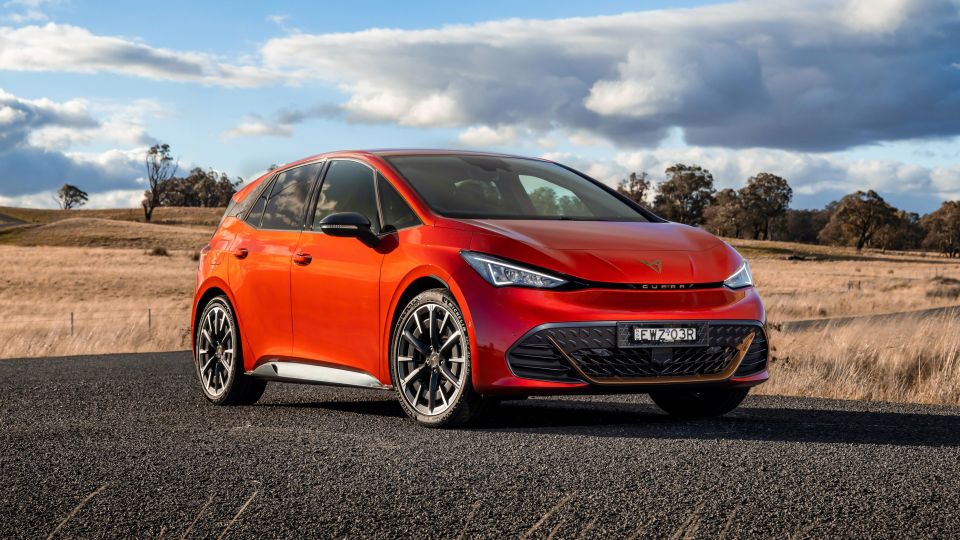
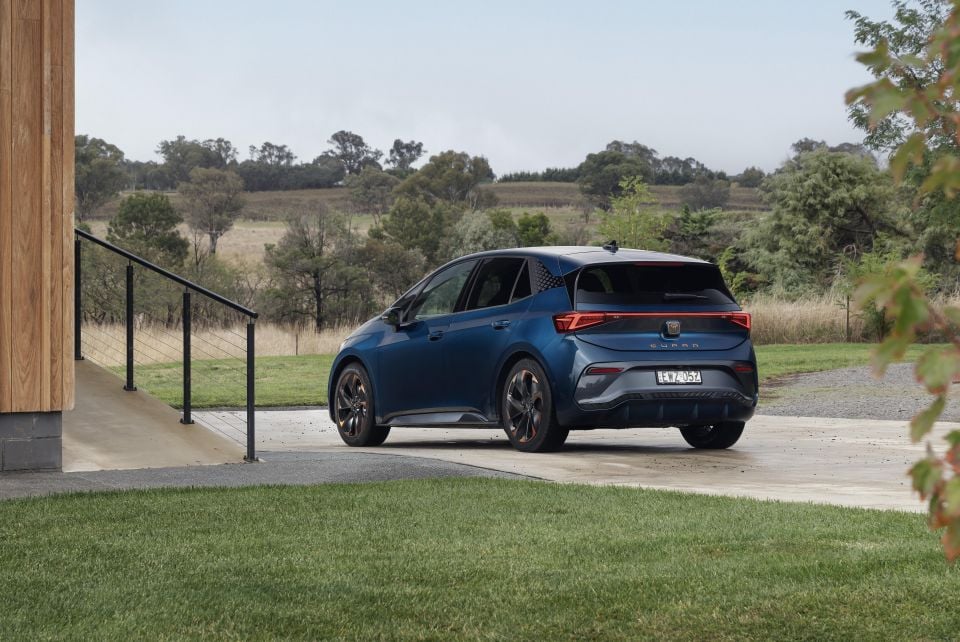

Quickly see how this car stacks up against its competition. Select any benchmark to see more details.
Where expert car reviews meet expert car buying – CarExpert gives you trusted advice, personalised service and real savings on your next new car.
Finally, the Volkswagen ID.3 has made it to Australia. Well… sort of.

After years of delays and tug-of-wars with head office to bring its electrified vehicles to Australia, the Volkswagen Group has passed the baton to Spanish upstart Cupra to take on the top-selling Tesla Model 3.
The Cupra Born is the brand’s first electric car, and is effectively the ID.3’s sportier cousin. It’s named after a progressive neighbourhood in Barcelona that blends medieval and gothic heritage with new boutiques, cafes and bars as well as art museums – fitting then, the Born is something of an ‘old meets new’ concept.
Based on the Group’s MEB electric toolkit, the Born is a rear-drive hatch aimed at proving electrified motoring can still be fun and attainable. Better yet, it’s priced identically to the Cupra Leon VZx and VZe flagships, giving customers the choice of 221kW petrol, 180kW plug-in hybrid or 170kW all-electric hot hatchbacks.
Just one variant will be offered at launch in Australia, complete with the flagship 77kWh (usable) long-range battery pack offering a claimed 511 kilometres of WLTP-certified range. That makes the Born the only EV in Australia below $60,000 to offer over 500km of driving range.

While still in its early days Down Under, Cupra is expecting big things from the Born, forecasting over 1000 deliveries in 2023 should all go to plan with supply and logistics, which would make it one of the more popular EVs in the country – 700 builds have been secured for the Australian market so far, with more than 500 sold already.
There’s a lot riding on this little-ish electric car, so how does it stack up?
As noted earlier, the Born comes in a single 170kW ‘e-Boost’ specification in Australia, with the larger 77kWh battery as standard – pricing starts at $59,990 plus on-road costs.
Cupra Australia recently detailed national drive-away pricing, which varies between states and territories – though doesn’t include state- and territory-based EV rebate schemes. See below for more.
The Born’s positioning is competitive, given the size, packaging, performance and driving range. Cupra has effectively reached price parity with the similarly-sized Leon VZe plug-in hybrid, and no other EV for this money offers the same level of performance or range.
Nissan’s Leaf e+ is the Born’s most natural rival in Australia, given the absence of the ID.3 until 2024, being a similarly sized electric hatchback around $60,000. However, the flagship Leaf’s $61,490 starting price is dearer the newer Born, and its 385km range according to WLTP specifications is well off the pace.
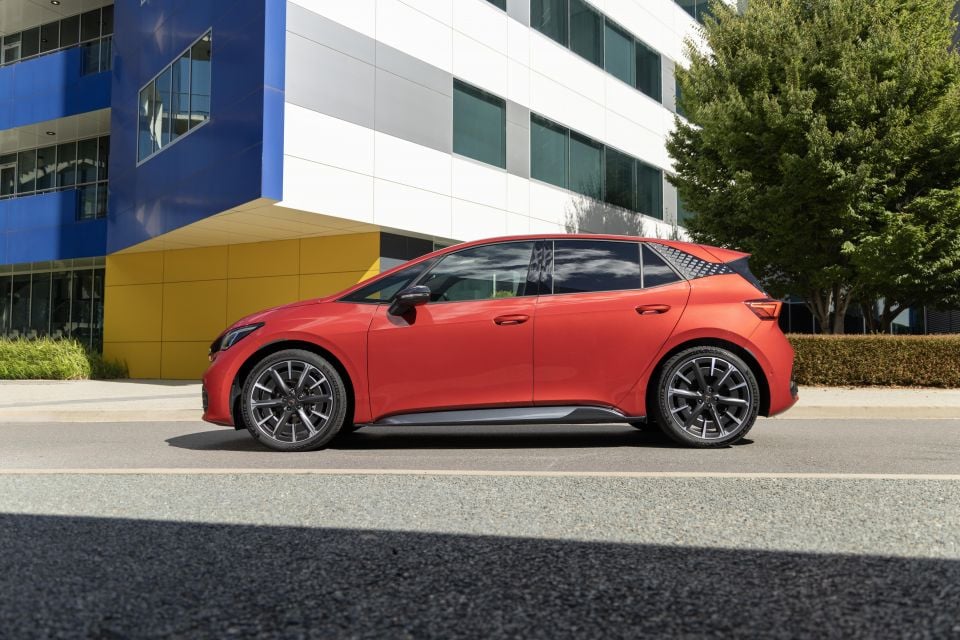
The outgoing Hyundai Kona Electric Extended Range starts at $60,500 for the Elite, offering a crossover body (if more compact than the Born) and the backing of a more established brand, though it can’t match the Born’s range (484km). A new model is due before the end of the year, which will offer more space and tech with similar range.
The biggest threat, however, is Tesla which offers the Model 3 from $61,300 after recent price increases. The Model 3 offers 491km of range in base trim, as well as a 6.1-second 0-100 time from its RWD single-motor drivetrain.
Also worth cross-shopping is the Polestar 2, which currently starts at $63,900 for the Standard Range Single Motor – a facelifted model is due later this year with rear-wheel drive and 518km of range in base specification.
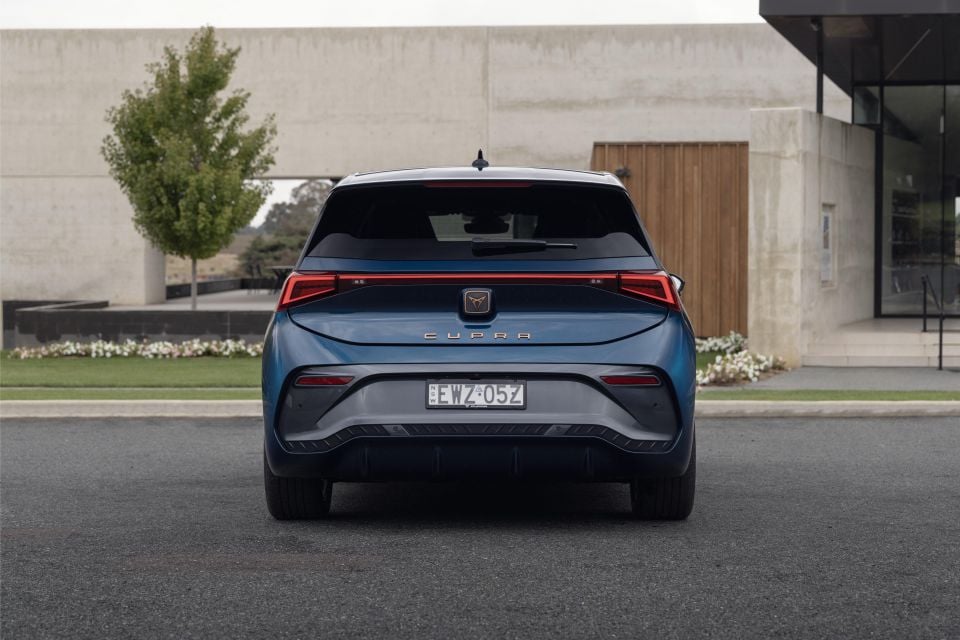
2023 Cupra Born pricing:
Price excludes on-road costs
Drive-away pricing:
Note: Drive-away pricing does not include state- and territory-based EV rebate schemes.
Buy your new car without the stress. It's fast, simple and completely free.

Great service from Travis and team, second time I have used this business would not hesitate to recommend them to anyone
Craig C.
Purchased a Ford Ranger in Sunshine Coast, QLD
CarExpert helped Craig save thousands on his Ford Ranger, now let us save you on your next new car.
Find a dealThe Born follows a familiar theme to its MEB-based relatives, with a pared-back approach to interior design.
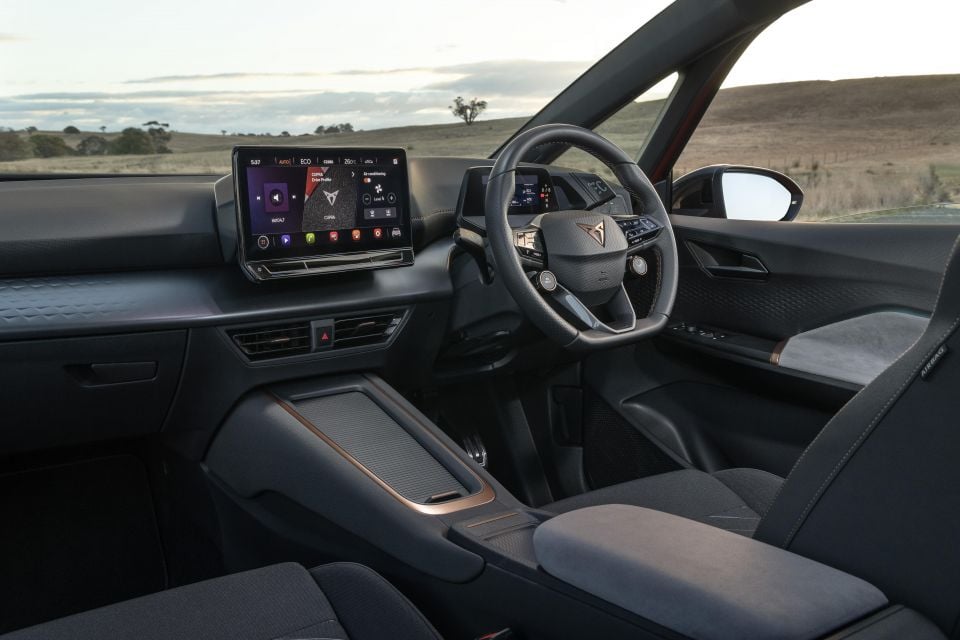
That’s not to say the Born doesn’t have a distinct flavour. In typical Cupra fashion, there’s flashes of bronze or coppery highlights throughout the cabin, and if you option the Interior Package ($2990) you get a blue interior theme with Dinamica suede seat upholstery.
It’s swish from the moment you get in, greeted by a lovely leather steering wheel. In the Born, there are touch-capacitive buttons which are a little simpler than the ones employed by Volkswagen, if still a little fiddly, with buttons flanking the hub to toggle the various drive modes.
The standard car gets sustainable black cloth, made from plastic waste fished out of the Mediterranean Sea. It’s good to touch and is comfy to sit in, and really doesn’t feel all too different from the sportier cloth trims used elsewhere in the Cupra range and across the VW Group.
Opt for the Interior Package and you get even cooler Aurora Blue Dinamica suede upholstery that’s also partly made from sustainably-sourced materials, complete with electric adjustment and massaging functions. Just note this package (and the Performance Pack, for that matter) remove the centre rear seat – i.e. the Born becomes a four-seater.
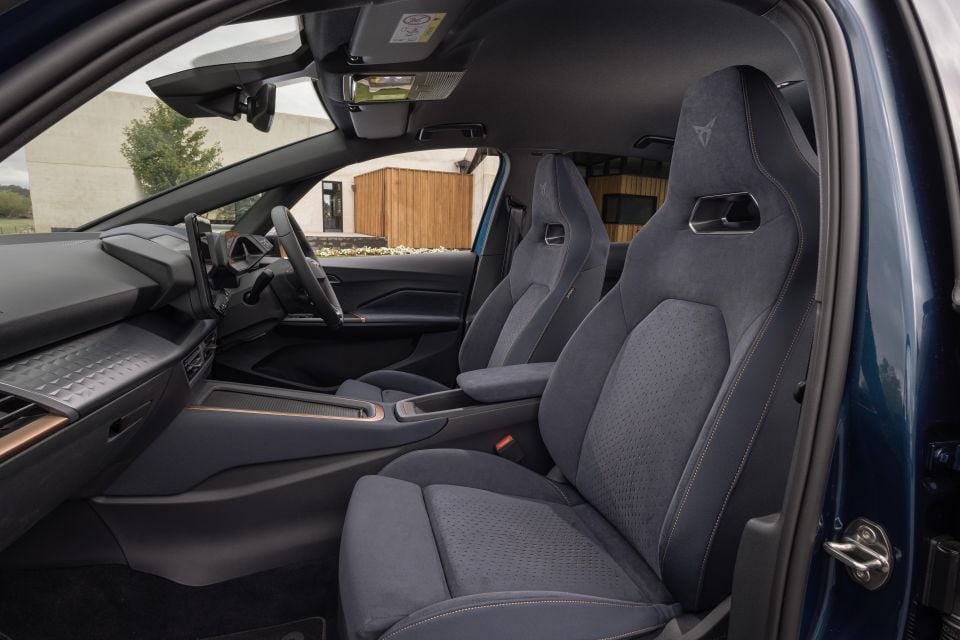
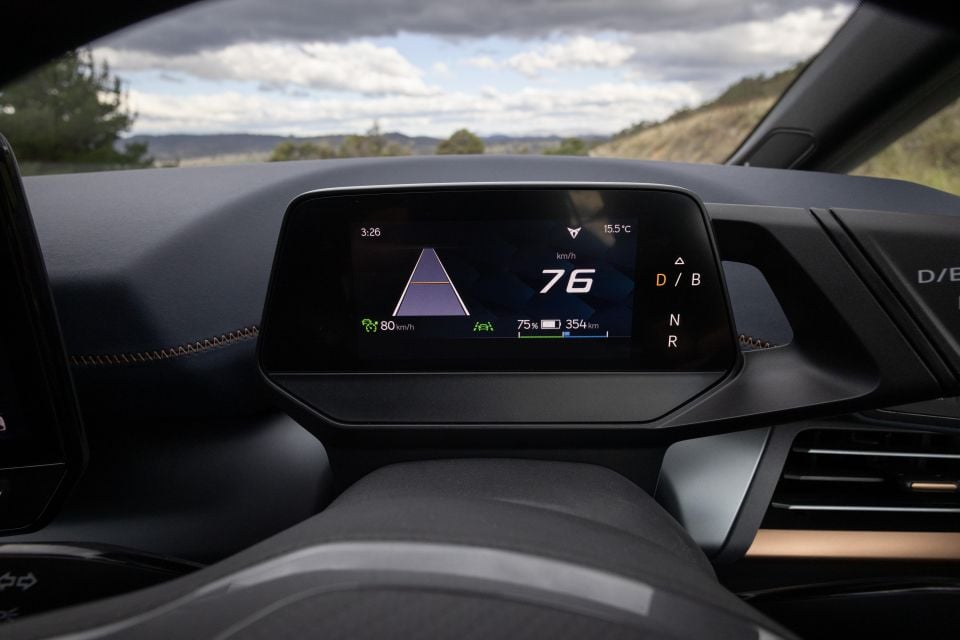
Suede highlights in the doors add to the athletic theme, and there’s plenty of adjustment in the seats and wheel – manual in the standard car, electric with massaging in the Interior Package. I will say, however, the hard plastic door trims take away from the otherwise upmarket ambience.
Ahead of the driver is a 5.0-inch Digital Cockpit display, which is not what we’re used to from the combustion-powered range, but is a feature that’s common to MEB-based cars – we just haven’t had them here yet.
It’s keeps information and distractions to a minimum, and using the touch-capacitive sliders on the steering wheel you can toggle a couple of views prioritising different information.
I love a Volkswagen Group digital cluster, but this feels a tad basic to me. It’s about simplifying things and keeping the most important things in front of you, but without a head-up display (available abroad) you’ll find yourself looking down for this kind of information rather than having it more directly in your line of sight.
The column-mounted gear selector is another interesting move away from tradition for Cupra and the Volkswagen Group, though we’re seeing a number of brands moving to this style of shifter to declutter the interior. It’s pretty simple to get the hang of – turn forwards for D/B, turn backwards for R.
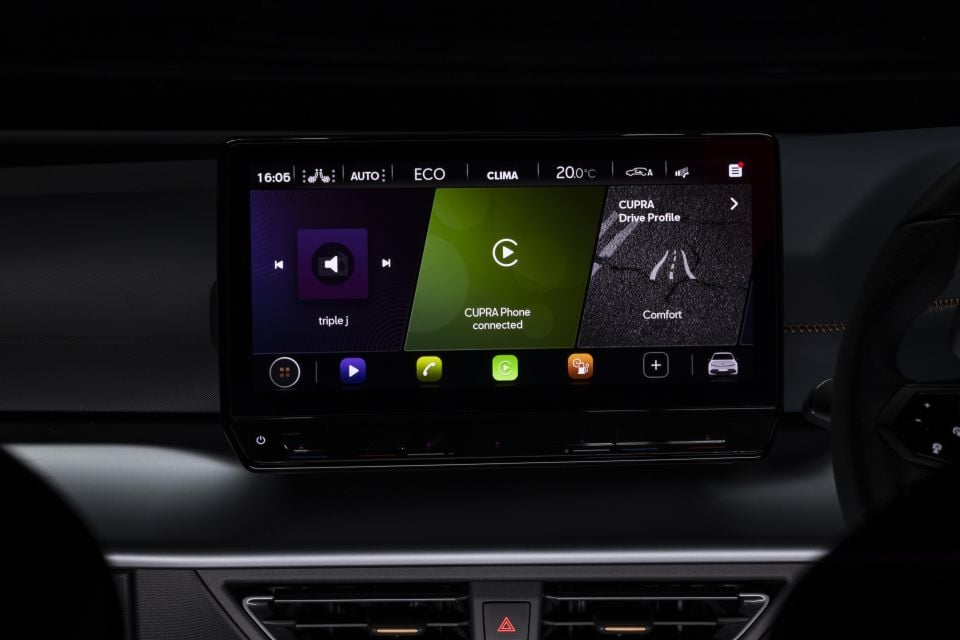
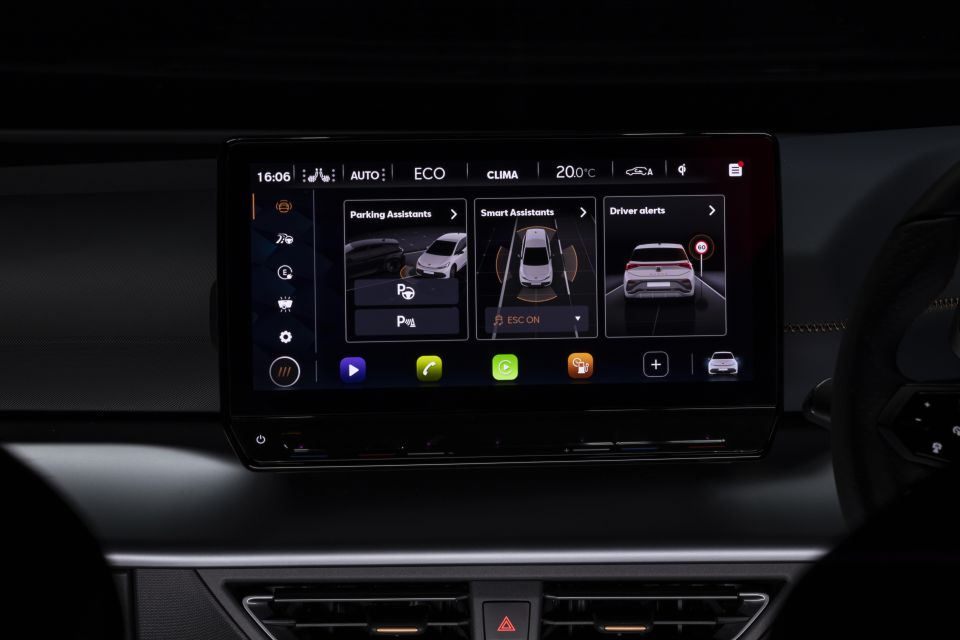

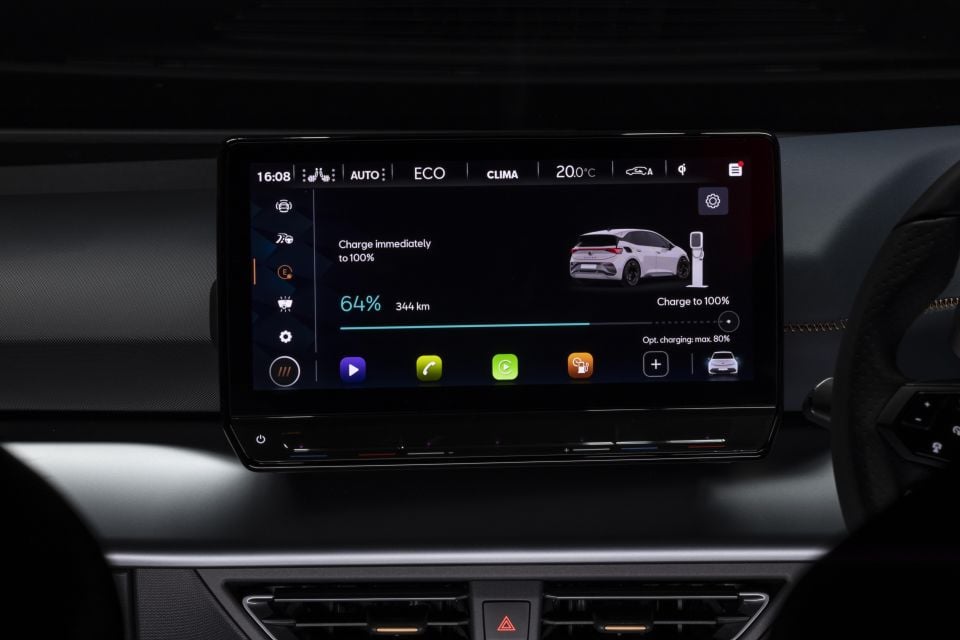
Then there’s that massive 12-inch central infotainment system, of which you’ll be largely familiar with from the latest Formentor and Leon.
Where it differs from other Cupra models is that it’s lacking embedded satellite navigation as well as wireless smartphone mirroring. It does, however, have wired Apple CarPlay and Android Auto, as well as DAB+ radio.
As we’ve assessed in other models in the line-up, Cupra’s take on the latest VW infotainment system is one of the better ones, with fixed shortcuts and intuitive menu layouts to make up for the lack of physical switchgear. It loads things quickly and is attractively styled.
It’s a shame the brand’s technology hero misses out on the flagship tech package – which Cupra’s local team says is down to a technical issue stemming from these features being tied to the MEB platform’s connected vehicle architecture, which as yet hasn’t made it to Australia.
Lovers of sunroofs will also be disappointed to know the fixed panoramic roof in overseas markets isn’t offered on local models, nor is the flash augmented reality (AR) head-up display.
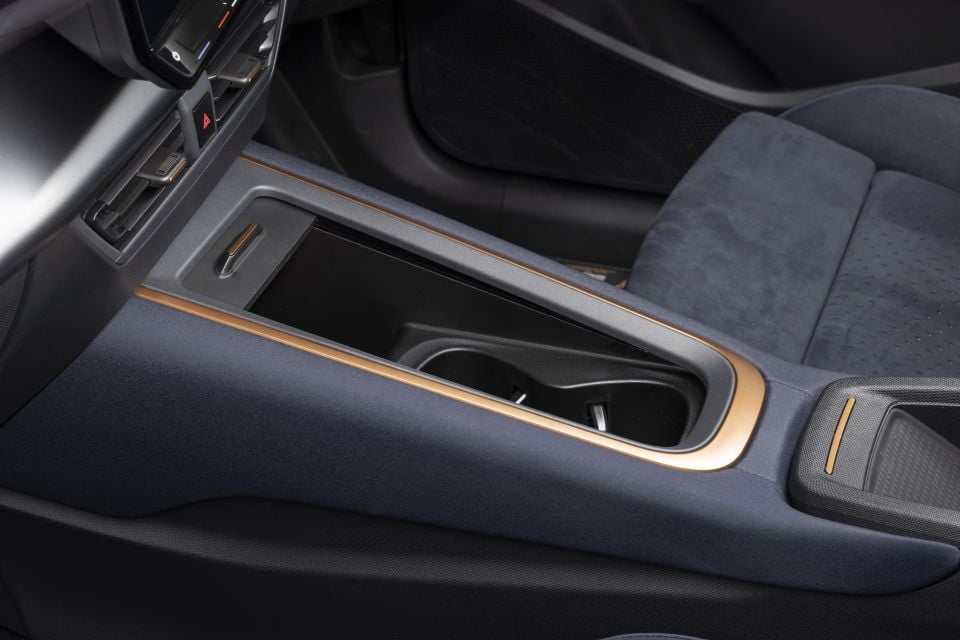
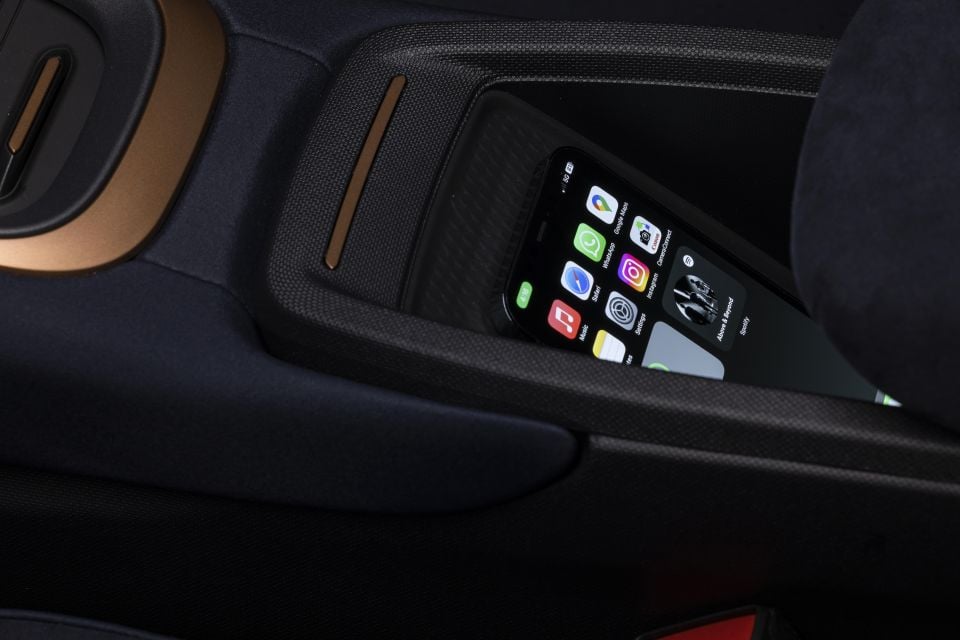
“The Born had only been developed as a connected vehicle. We weren’t able to, in the timeframe, develop the connectivity functions [for Australia] – there are some technical reasons behind that – but we knew we needed to have that car in the initial phase of Cupra, so the factory developed this version for us that doesn’t have the connectivity function which does affect a few of the vehicle’s systems,” said Jeff Shafer, head of product and planning for Cupra Australia.
Mr Shafer added we can expect to see updates “year-on-year” that could bring these features to our market at some point, though it’s unclear exactly when we’ll see them added.
Storage, meanwhile, is pretty good up front. There’s a deep pair of cubbies under sliding drawers, the upper one concealing cupholders and a slot for keys and wallets, while the lower section hides under the centre armrest and incorporates the wireless phone charger as well as a deeper storage area for larger items.
I’m a fan of the padded material surrounding the centre tunnel as well as the copper highlights throughout, which contrasts well with the blue upholstery as featured in the optional Interior Package. I also like that the wireless phone charger doubles up as a holder with gap for cables when wired up for Apple CarPlay or Android Auto.
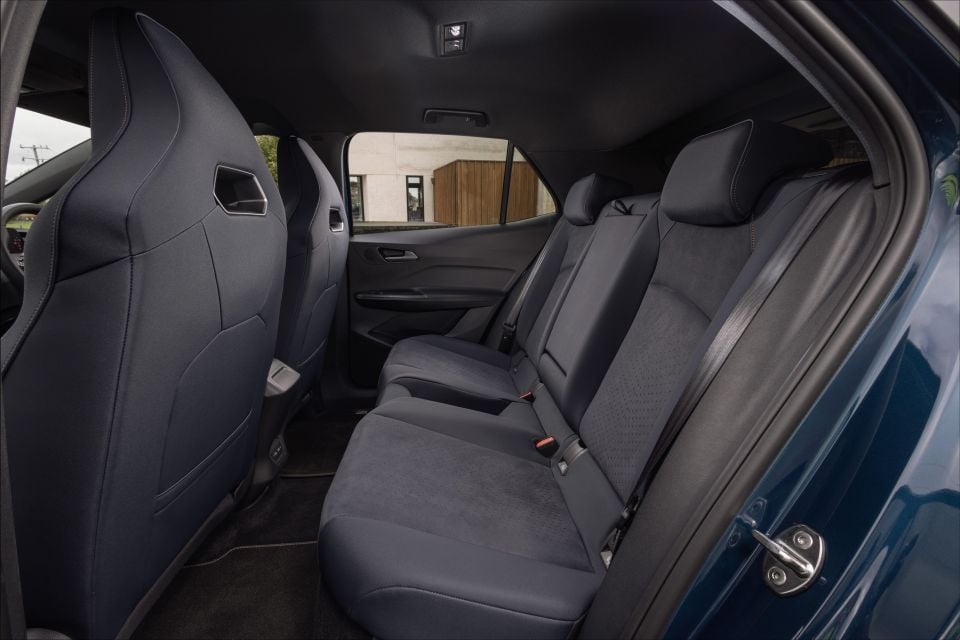

Moving to the second row, the Born’s boxier proportions and taller roofline pay dividends.
At 6’1 I’m above average height, and can fit pretty comfortably behind my own driving position – which can’t be said for a lot of EVs at this end of the market.
Knee and legroom is good for the class, while headroom is excellent. I will note, however, is that the floor feels a little raised and longer-legged folk will get that knee-up feeling, but it’s far from uncomfortable.
Rear seat amenities include a pair of USB-C ports behind the centre console (but no air vents), map pockets behind the rear seats as well as a fold-down centre armrest with cupholders. There are also bottle holders in the doors and the requisite ISOFIX and top-tether points.
Worth noting is the standard three-seat rear bench turns into a two-seater when optioned with either of the extra-cost packages, making the Born a four seater. If you need to carry three in the rear often, we suggest avoiding the Interior and Performance Packages.
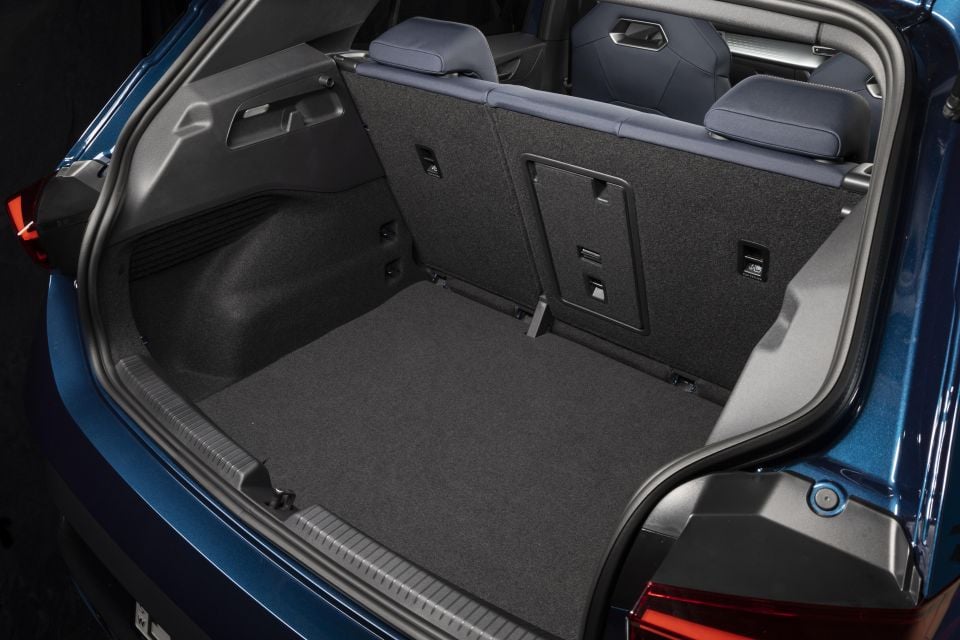
The boot area is a strong point, with 385L matching that of something like a Leon or VW Golf.
Cupra doesn’t quote a figure with the 60:40 seat backs folded, but the space itself is nice and square, as well as deep. It can’t, however, match the boot areas of the BYD Atto 3 (440L) and Tesla Model 3 (425L + 224L frunk).
Like a number of EVs, there’s no spare wheel under the boot floor. Cupra says both the standard and performance tyres on the Born have a self-healing design that works a little like a run-flat design in the event of a puncture.
Just one specification is available from launch, the e-Boost 77kWh drivetrain which is the flagship globally.
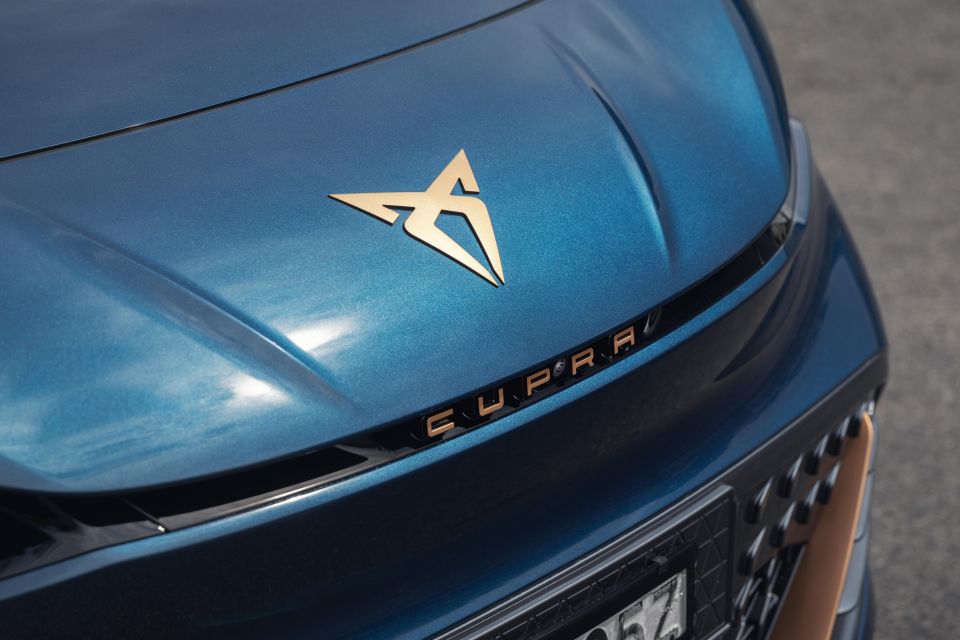
The rear-mounted electric motor generates 170kW and 310Nm, allowing for a claimed 0-100km/h sprint time of 7.0 seconds, and a WLTP-certified driving range of 511 kilometres on a full charge based on a consumption rate of 17.0kWh per 100km. Cupra also quotes a 0-50 time of 2.8 seconds.
Speaking of range and charging, the 77kWh usable (82kWh net) lithium-ion battery pack can be charged via AC at 11kW, or DC fast charging at up to 170kW. The Born is the only EV on sale in Australia with over 500km of range priced under $60,000.
It’s worth noting the above specs are applicable to the standard wheel and tyre package. Opting for the optional Performance Package ($2600) with its larger 20-inch wheels and wider 235mm Michelin Pilot Sport 4 tyres reduces quoted driving range to 475km based on an energy consumption figure of 18.2kWh per 100km.
While not available in Australia, Cupra does offer a smaller 58kWh battery pack in overseas markets like Europe and the UK with both the 170kW e-Boost drivetrain as well as a lower-spec 150kW version.
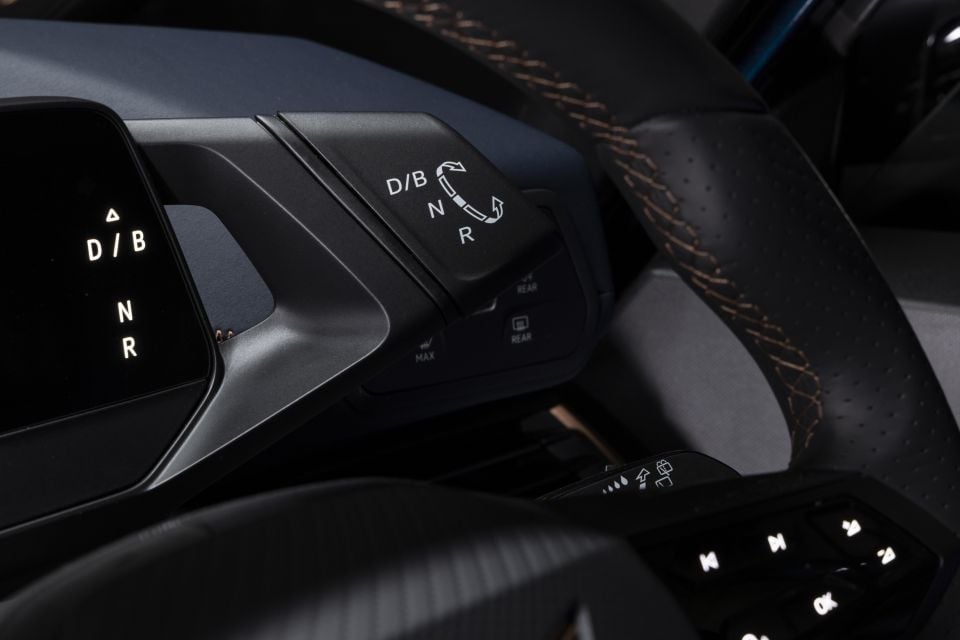
The 150kW 58kWh Born in the UK quotes a combined driving range of 424km on the WLTP cycle, while the 170kW e-Boost motor with the smaller battery drops that slightly to 420km.
While it loses range, the e-Boost 58kWh’s lighter battery unit means the Born’s 0-100 time drops to a hot hatch-like 6.6s. For reference, the 180kW Cupra Leon VZ petrol-powered hot hatch quotes a 6.4s dash to triple figures.
Cupra Australia hasn’t confirmed any firm plans to introduce more Born variants anytime soon, though brand representatives have left the door open to yearly updates and a potential line-up expansion.
Being my first ever experience with a vehicle based on the MEB platform, I wasn’t sure what to expect whilst also hoping the Born would feel like something of an all-electric MQB car.
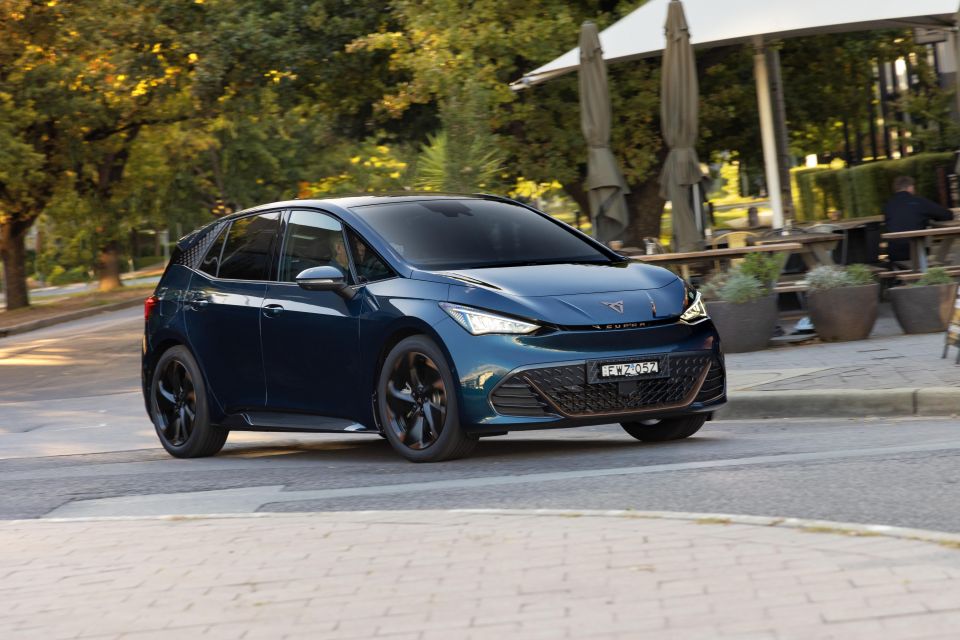
Where expert car reviews meet expert car buying – CarExpert gives you trusted advice, personalised service and real savings on your next new car.
Thankfully, Cupra Born follows its combustion and hybrid-powered stablemates in delivering a balanced and refined drive errs on the sportier side of things to dial in a bit of fun.
Leaving the Born in D means there’s little to no regen braking, and it basically scoots along like a petrol car. It offers smooth and effortless acceleration, accurate and fluid steering, as well as a compliant ride that communicates the road surface beneath but isolates occupants nicely.
If you want more regen, flick the column-mounted drive selector into B and the Born will do most of the deceleration via regen braking, though it won’t come to a complete stop like rival. One gripe I had was the transition from regen to mechanical braking, which could be sudden and inconsistent meaning gradual inputs when driving at city speeds can take a bit of practice to do smoothly.
It’s very quiet to spend time in, regardless of whether you’re cruising around the Canberra CBD or at 100km/h on a country road, with a faint whirring of the electric motor in the background and impressive insulation from the outside world when it comes to wind and road noise.

Even in Cupra mode, the Born doesn’t play fake engine noise which in some rival EVs can sound contrived, meaning the new era of fun for the brand is had in near silence. Cupra Mode also dials up more aggressive regen and bypasses the awkward transition between regen and mechanical brakes through the pedal – the Born runs front discs and rear drums.
Let’s be real though, the majority of this car’s life is going to be spent around the city and suburbs doing mundane tasks, so having some obnoxious sound playing isn’t necessary. The fact the lively steering and keen chassis make even the most mundane of commutes that little bit more fun, however, is where the Born shines.
A lot of overseas reports have criticised Volkswagen Group MEB products for being a bit dull from behind the wheel; the Born is anything but. You feel quite connected to it, and the rear-drive balance helps bring back memories of fun RWD compact cars of old, perhaps like the previous-gen BMW 125i.
Turn the steering wheel and the Born’s nose follows where you’re pointing, with limited body roll and good grip even on the standard 19-inch wheels shod in 215/50 Continental EcoContact low-rolling resistance tyres. Once the front is on course, the rear is brought around by the rear motor and it’s quite a chuckable thing.
We tested both the standard car and the Performance Package back-to-back, and while the wider and stickier 235/40 R20 Michelin Pilot Sport 4 tyres lend a more confident stance and extra grip, it didn’t feel entirely necessary.
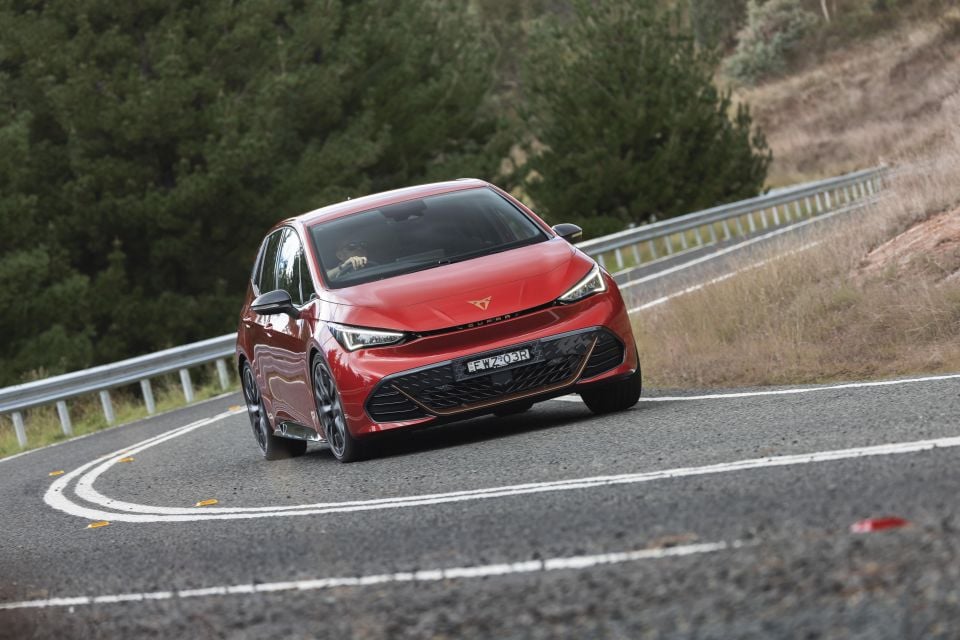
There’s a charm about the base car’s marginally lower ceiling, requiring more precise and measured driving to get the best out of it. That’s not to say it’s a poor relative, but it seems a little more playful and honest while offering better range and refinement.
Through the winding B-roads outside Canberra, the Born demonstrated its sporty DNA nicely. It’s more than capable of putting a smile on your face up a twisty mountain road, even if its power output and 0-100 time aren’t quite as exciting as the figures quoted by the Leon VZx.
Pop it in Cupra and plant your right foot and it’s deceptively quick in a straight line, easily hitting triple figures though it will taper off at the high end as you’d expect.
While the Born’s outputs aren’t quite benchmark numbers for similarly-priced hot hatches, the rear-drive balance and immediate torque response make it really fun to punt around. As noted earlier, it has a bit of old 125i about it, giving it an old-school flavour in a new-school package.
Another aspect of that sportier feel is the way the front bucket seats hold you in while you’re driving, offering good comfort for daily duties and longer stints, as well as enough bolstering to not have you slipping about in corners. You can set your driving position fairly low in the cabin too – just how I like it – which again lends a more sporting vibe.
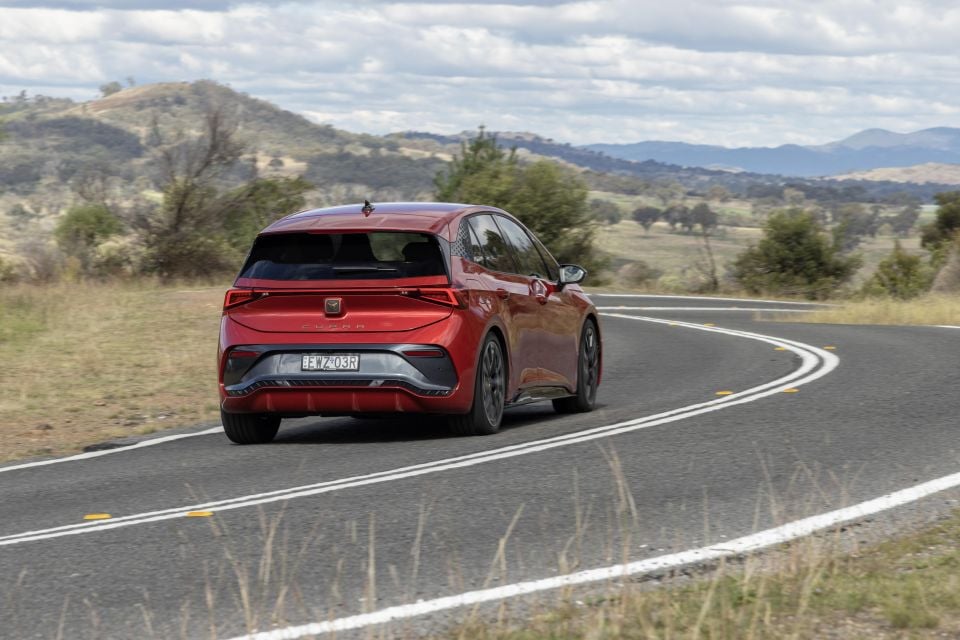
In terms of driver assistance systems, the Born is fairly typical Volkswagen Group fare if missing some of the stuff we’ve come to expect.
Adaptive cruise control and blind-spot monitoring work as you’d expect, and the calibration of the former is one of the more intuitive of its type, if a little conservative as we’ve found with the latest Group products.
However, there’s no Travel Assist on Australian models. According to the brand’s representatives, features like Travel Assist as well as embedded satellite navigation and wireless smartphone mirroring are tied to the MEB platform’s connected vehicle architecture unlike combustion-powered models, and the company was unable bring the Born to Australia with all of these things in place.
It won’t be a deal-breaker for all, but given the Born is something of a technology showcase, it’s disappointing such a prominent driver assistance feature is missing. Cupra has said it will like at bringing connectivity “over the next few years”, so expect the full feature set to become available eventually.



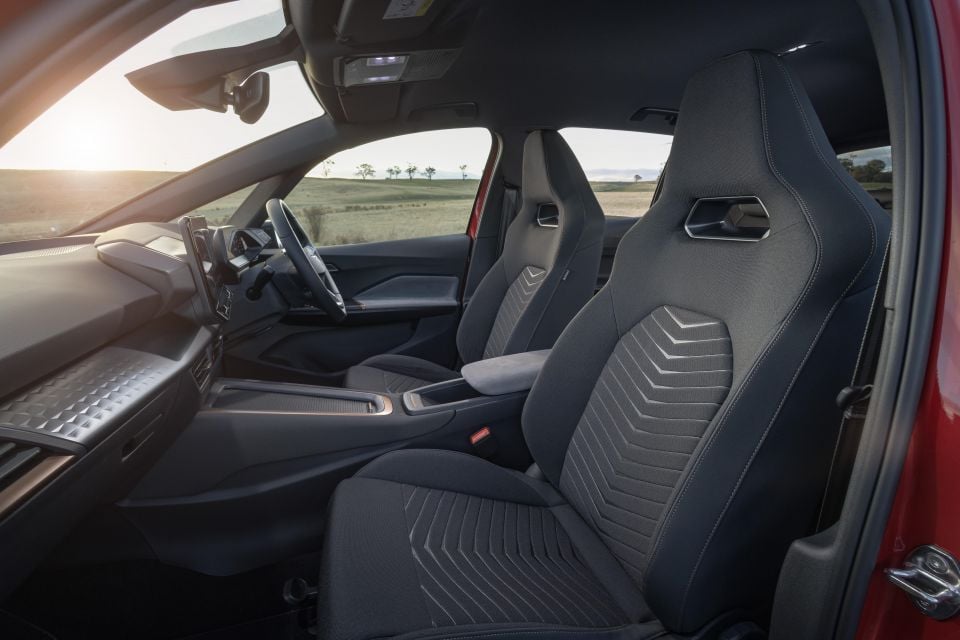
Born highlights:
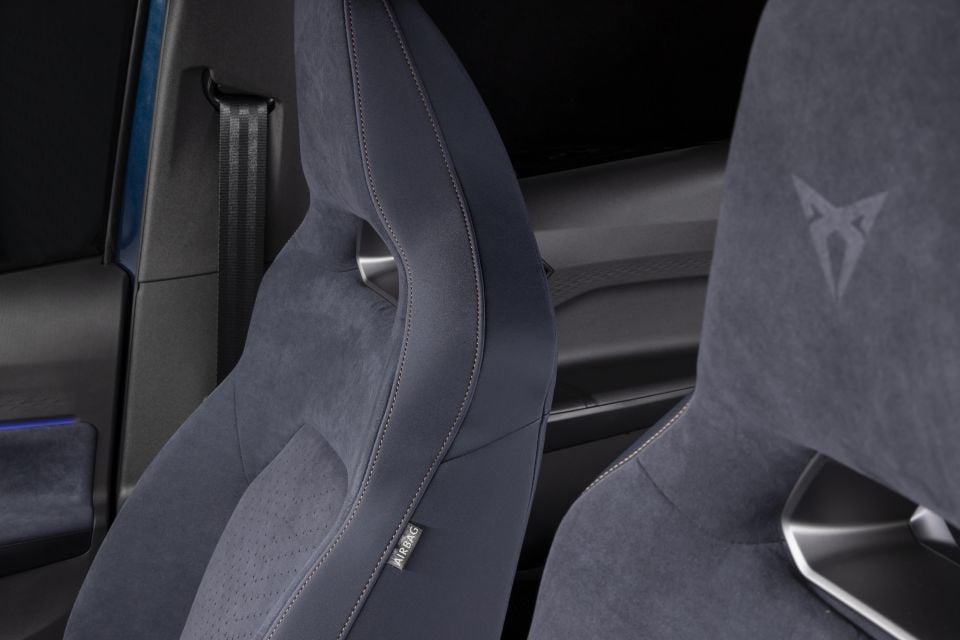
Interior Package: $2900
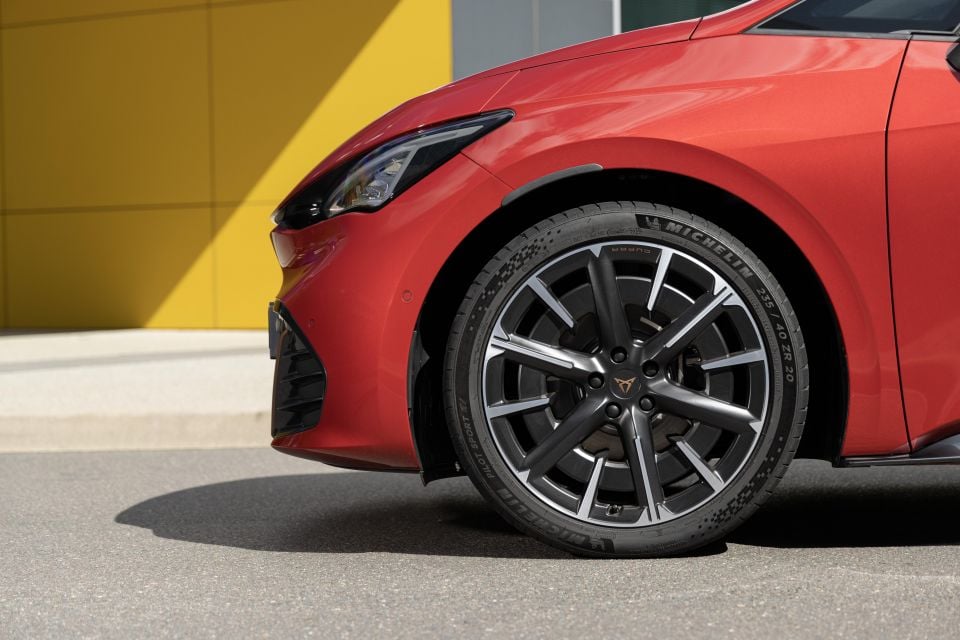
Performance Package: $2600
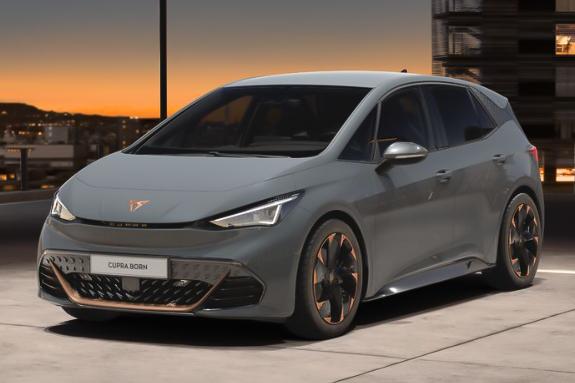
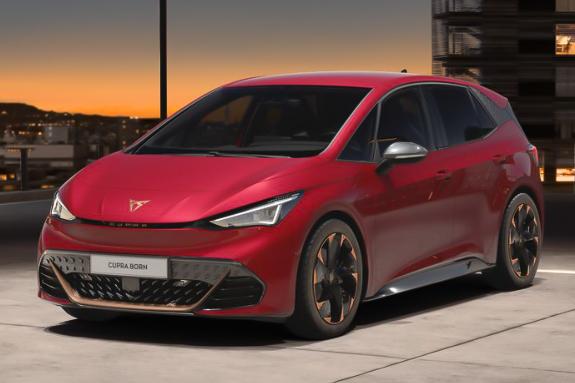
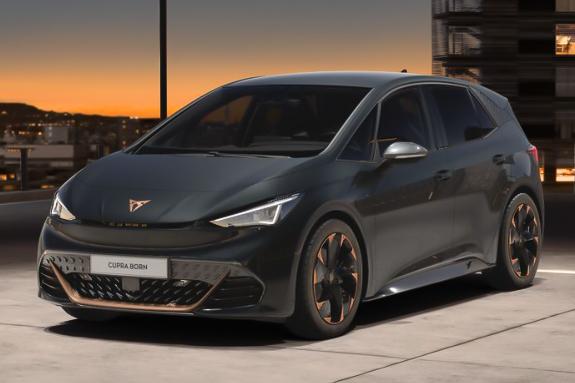
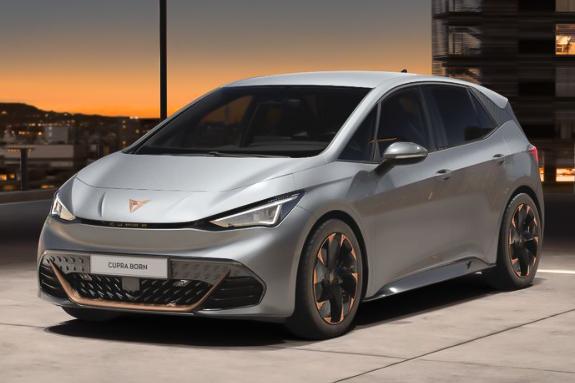
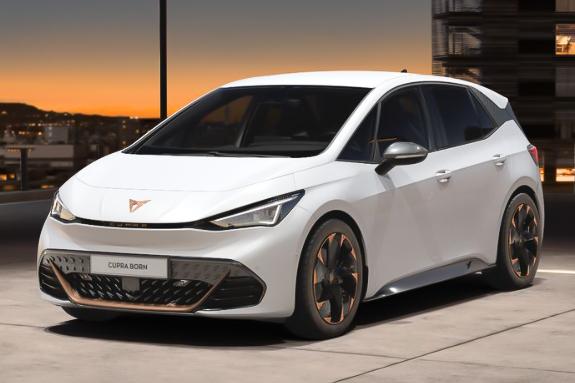
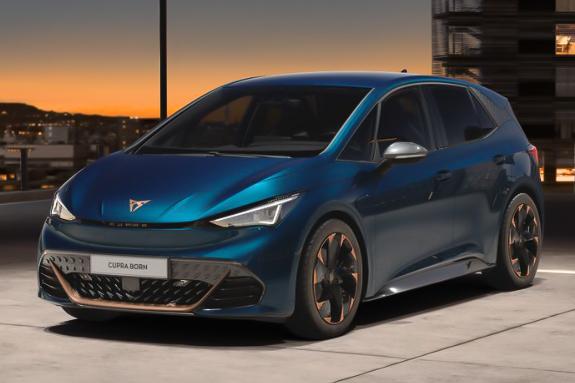
Standard: $NCO
Metallic: $NCO
Premium Metallic: $475
The Cupra Born arrives to market with a five-star ANCAP safety rating, based on 2022 Euro NCAP tests.
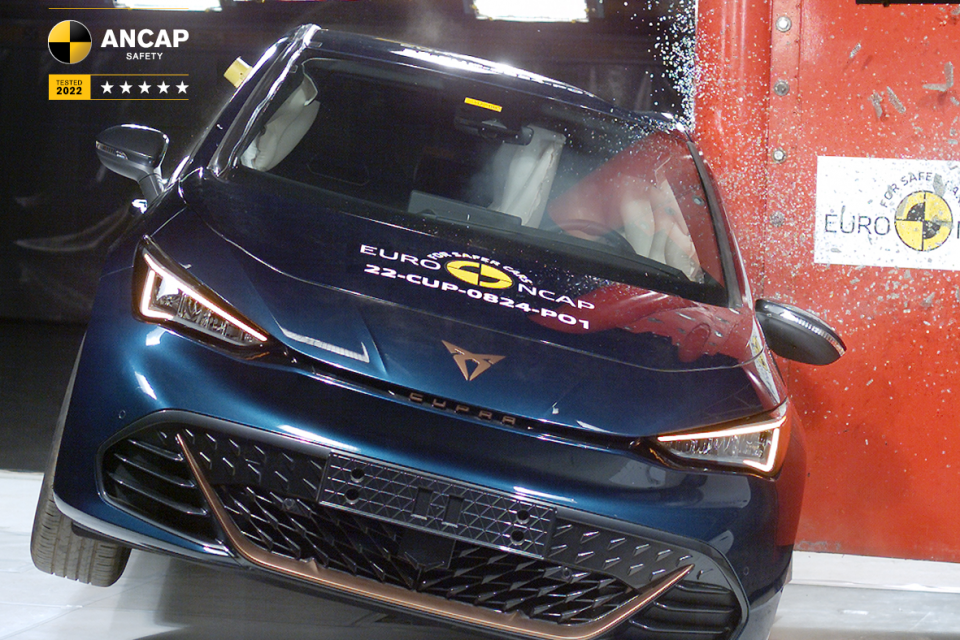
It scored 93 per cent for adult occupant protection, 89 per cent for child occupant protection, 73 for vulnerable road user protection, and 80 per cent for safety assist.
“It’s great to see another fully electric model enter our market with the maximum five-star ANCAP safety rating,” said ANCAP Chief Executive, Carla Hoorweg.
“The momentum for safe and green models is growing, and this rating will provide further confidence to consumers and regulators to embrace safety and environmental credentials as a non-negotiable package.”
Standard safety features include:
Like the wider Cupra line-up, the Born is backed by a five-year, unlimited-kilometre warranty.

Also part of the purchase price is five years of 24-hour Cupra Roadside Assist.
Cupra unfortunately no longer offers a complimentary three-year Service Packs anymore like it did at launch, though you’ll see them offered with promotions from time to time.
The Born is available with three- and five-year pre-paid service plans, priced at $990 and $1590 respectively.

The company offers two different types of home wallboxes, that can be installed through JET Charge. The cheaper Pulsar Plus unit is priced from $1400, while the fancier Commander 2 system is $1990.
Unfortunately, due to time constraints on the launch event we weren’t able to do a real-world charge test for the Born in Canberra. We’ll aim to do this once we get the vehicle in our hands for a longer loan.
We did, however, note real-world indicated consumption figures with both wheel packages. The standard car was showing low-17kWh/100km while the Performance Package showed mid-19kWh/100km – both close to their claims, despite the drive route having a skew to high-speed, dynamic conditions.
The Born has sparked a new era for the VW Group.
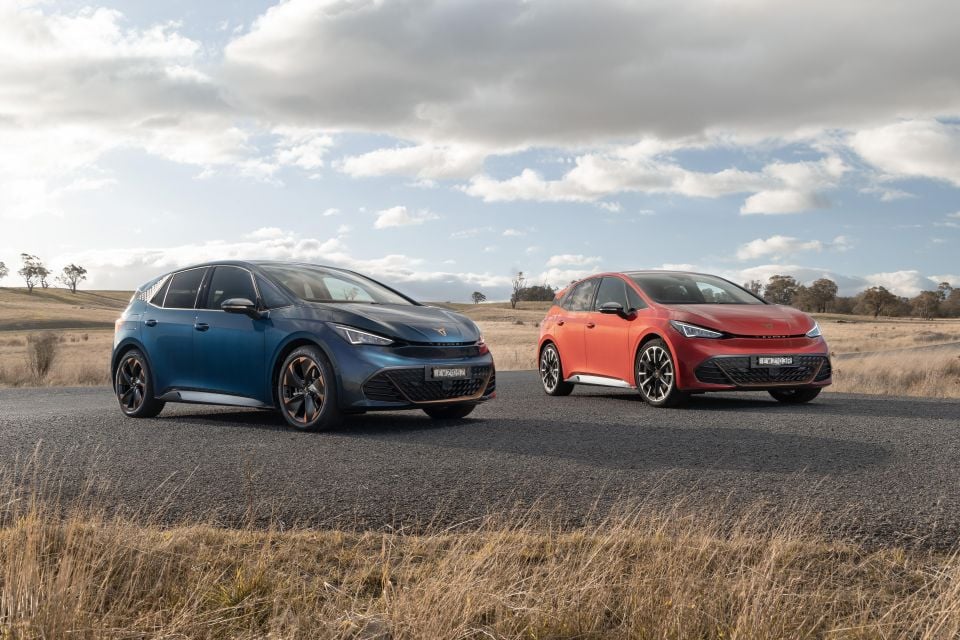
It’s about time we got some MEB love Down Under, and the Cupra Born is proof this new wave of electric vehicles is something to be excited about. You’re not just limited to Tesla if you want a good EV at an attainable price that isn’t from a Chinese challenger.
While some will lament missing features that should come with updates, the Born offers a balance of performance, range and practicality that betters just about every other effort at this price point, and dials in a level of fun and engagement that hasn’t really been seen at this end of the EV market.
It drives really well, offers great range, and strong value in terms of features and space packaging relative to key rivals – even with some omissions. Plus, you can spec some cool colours and trims to make it stand out that little bit more.
Credit to Cupra for injecting its sporting DNA into the Born’s platform, and for being able to bring in what is effectively a flagship offering for a competitive price against existing players.
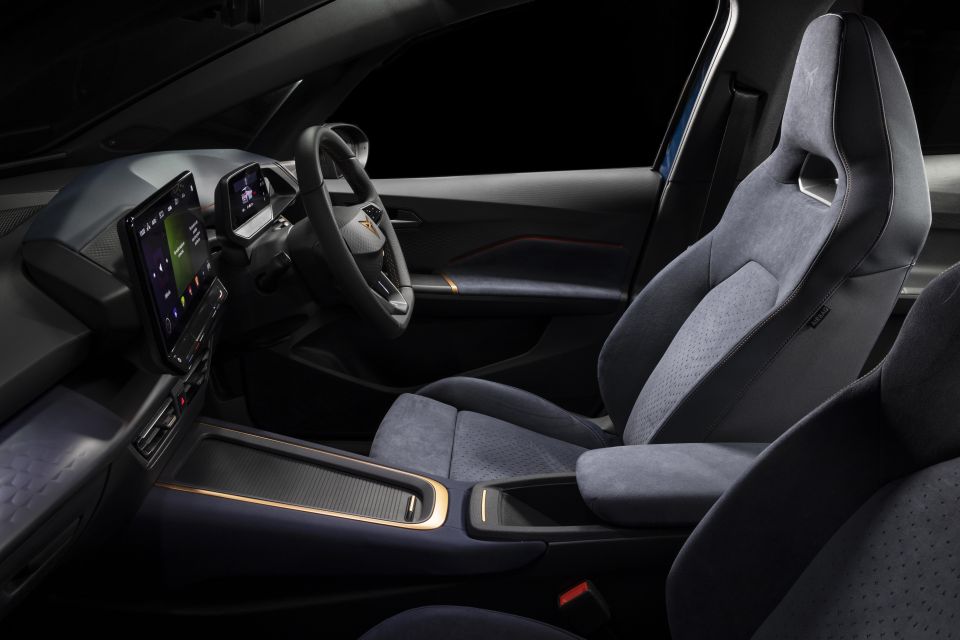
Also props to the Spanish brand for achieving price parity between the Born and high-spec versions of the Leon – including the plug-in hybrid.
I’d love to see nicer materials used on the doors in a future update – like we’ll see in the VW ID.3 when it comes here – as well as the full suite of features included so Australian customers have the same catalogue as the rest of the world (including New Zealand). More variants – namely more affordable ones – would further broaden the Born’s appeal in Australia as well as Cupra’s.
If you’re looking for a new EV around $60,000 make sure you make a trip to a Cupra Garage and give this a look. Skip the Performance Package, but if you want something a little special nab one with the Interior Package – that’s Wongy’s hot buyer tip.
Bon fet Cupra, bon fet…
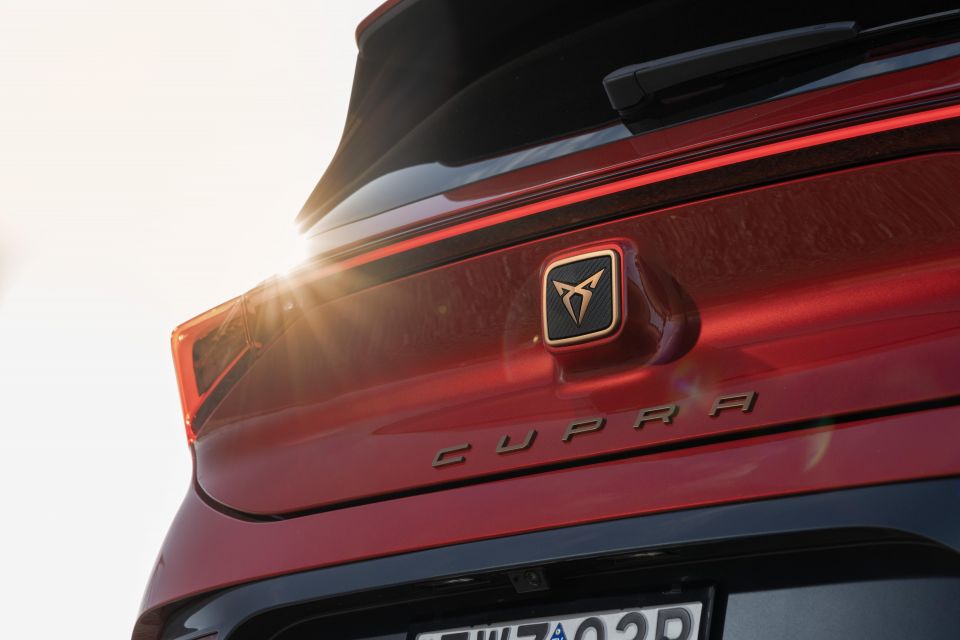
Click the images for the full gallery
MORE: Everything Cupra Born
Where expert car reviews meet expert car buying – CarExpert gives you trusted advice, personalised service and real savings on your next new car.
James Wong is an automotive journalist and former PR consultant, recognised among Australia’s most prolific motoring writers.


Damion Smy
10 Hours Ago


Damion Smy
12 Hours Ago


Damion Smy
13 Hours Ago


Damion Smy
15 Hours Ago


Damion Smy
16 Hours Ago


Damion Smy
18 Hours Ago